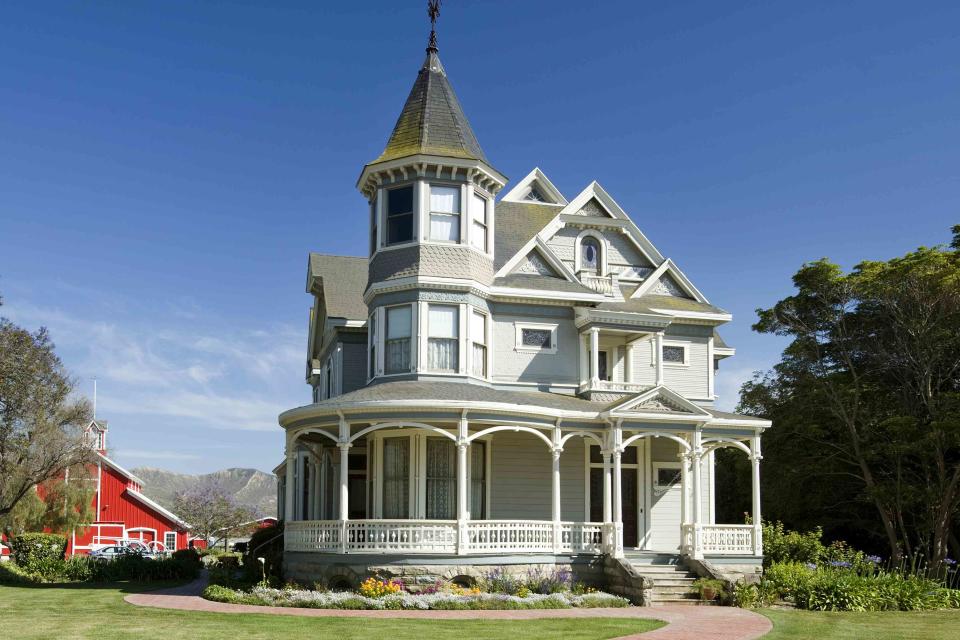What Is Victorian Architecture?
A quick overview on the history, evolution, and defining characteristics behind this elaborate architectural style.

Tony Roberts/Getty Images
When you find yourself in the shadow of a classic Victorian home, you may struggle to zero in on a singular decorative focal point—but that's kind of the whole idea. The very mantra of this architectural style is “more is more,” which is apparent in its plethora of intricate details.
“I love the bay windows, iron railings, decorative brick, and complex roof lines that draw the eye upward,” says Jeri Brown, founder and principal interior designer for Jeri Brown Design, who used to live in a 1910 apartment on the Upper East Side in New York. "The Victorian molding, trims, and parquet flooring exuded so much warmth and charm,” she says.
Keep reading for a quick dive into the history of Victorian architecture, its evolution, and what defining traits set it apart from other design styles.
Related: 13 Different House Styles to Know if You’re Shopping for a Home
Victorian Architecture History & Evolution
Victorian architecture gained momentum in the 1800s under the reign of—you guessed it—Queen Victoria. The entire period, which lasted through the early 1900s, was characterized by utter opulence, unapologetic excess, and a prioritization of beauty over function. It ran parallel to other iconic styles, Brown notes, including Gothic revival, Renaissance revival, Queen Anne, and Romanesque.
Victorian architecture eventually spread from England to the United States (it was especially popular in places like San Francisco, New Orleans, and Savannah), as well as Australia and New Zealand. Over time, Victorian architecture has evolved to accommodate local preferences, modern tastes, and availability of building materials.
“Recently, a refreshing design trend known as grandmillennial has emerged, deviating from the sharp lines and neutral colors prevalent in contemporary designs,” Brown notes. “This resurgence of interest in charm and depth has prompted homeowners to incorporate intricate details such as wainscoting, decorative wallpaper, molding, and elegantly patterned drapery.”
Clearly, Victorian architecture remains a steadfast influence in our modern world. Not only are designers and architects hearkening back to the classic design style as they build and decorate, but historic Victorian homes remain cherished living artifacts.
6 Common Characteristics of Victorian Architecture
Though every Victorian home is unique in its own way, the style has some key defining traits.
Tall Frames with Multiple Stories
While ranch style builds and modern architecture both tend to spread out and look flat, Victorian homes are almost always very tall with multiple stories. The height was a sort of status symbol—a tall home meant a noteworthy status. It also just made sense in more urban settings where ground space was limited. Furthermore, the height allowed for grandiose ceilings and lots of natural light via large windows.
Ornate Exterior Detailing
If it’s not over the top, it’s probably not Victorian. “Victorian-style homes feature stunning decorative trim and millwork around windows and doors," says interior designer Audrey Scheck. "By utilizing fanciful cut trim and moldings, builders were able to achieve a one-of-a kind look for each home." Also, the aesthetic goal of Victorian architecture was to convey a sense of grandeur, wealth, and progress. The intricate details and elaborate ornamentation certainly aid in that goal.
Large Verandas
Many Victorian houses feature spacious, covered front porches complete with ornamental posts and carved railings. Not only does this make visitors feel welcomed as they approach the home, but it provides an extension of the indoor living space. Some porches even wrap around the house for an extra dose of grandiosity.
Saturated Colors
Before the Victorian era, the majority of houses were painted a singular color—usually a neutral, non-fussy white or beige. “By 1887, bright earth tones like burnt sienna and mustard yellow became more popular,” Brown says. “The shift toward incorporating bright earth tones was influenced by the time's broader artistic and cultural movements.”
She adds that the Victorian era was notably characterized by a keen interest in nature, the arts, and historical design elements. These rich, earthy colors were reminiscent of natural landscapes and ancient architectural styles, aligning with the romantic and nostalgic sentiments of the era.
Steeply Pitched Roof Lines
Unlike the modular builds of the modern era, Victorian-style architecture features elaborate roof lines, towers, and turrets. “Victorian homes often have steeply pitched roofs with multiple gables facing in different directions,” Scheck says. “The purpose of this is to draw the eye upward and to allow for grand, tall ceilings within the home.”
Bay Windows
Bay windows are another prominent detail in Victorian architecture. These serve the practical function of expanding the interior living space and letting in more light, but also create more interesting architectural lines.
“From an aesthetic standpoint, bay windows were a way to add visual interest to the exterior facade, breaking up the flat plane of the wall and contributing to the overall picturesque and ornate appearance characteristic of Victorian architecture,” Brown explains.
Related: 10 Small Design Upgrades to Add Character to a New Home
For more Real Simple news, make sure to sign up for our newsletter!
Read the original article on Real Simple.

